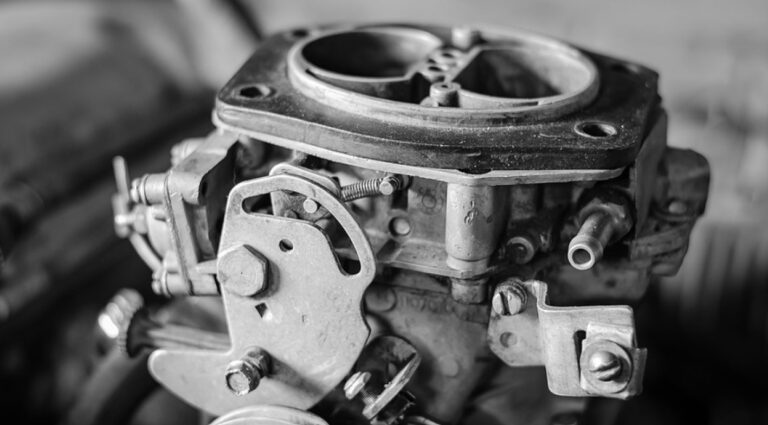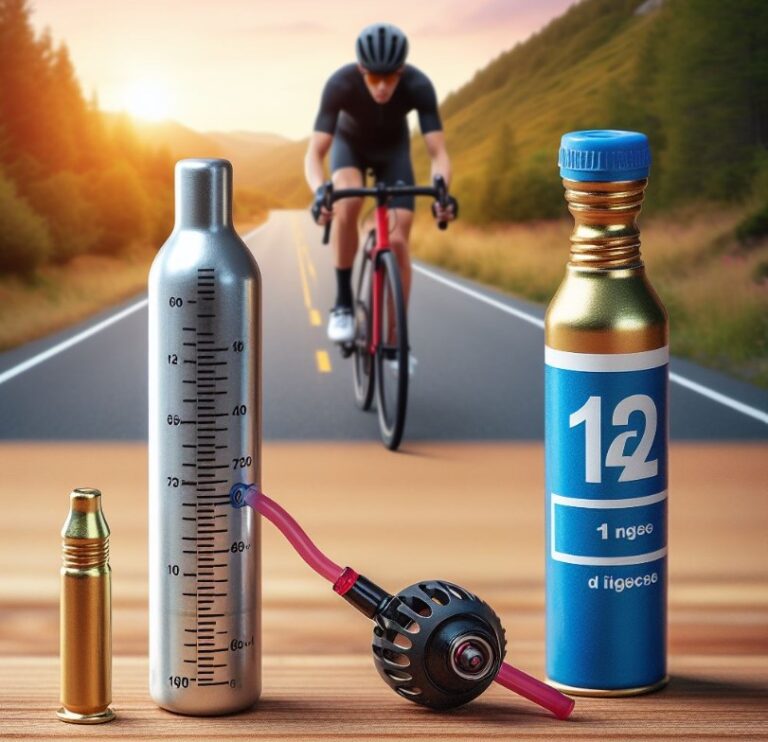Are Motorcycle Hitch Carriers Safe? Quick Answer
Motorcycle hitch carriers offer a unique solution for transporting motorcycles using a vehicle. As riders explore this option, the question “Are Motorcycle Hitch Carriers Safe?” becomes paramount. This article delves into the safety aspects, design considerations, and user experiences surrounding motorcycle hitch carriers, ensuring a comprehensive understanding for potential users.
Key Takeaways
- Motorcycle hitch carriers provide a convenient mode of transportation for motorcycles.
- The safety of these carriers depends on proper installation, weight capacity, and regular maintenance.
- It is essential to adhere to the manufacturer’s guidelines and conduct regular inspections to ensure safety.
Are Motorcycle Hitch Carriers Safe?
Motorcycle hitch carriers are generally safe when used correctly. However, their safety largely depends on several factors such as the quality of the carrier, the proper installation, and adherence to the carrying capacity.
It is crucial to select a hitch carrier that is compatible with your vehicle and motorcycle. Additionally, ensure the carrier is installed correctly and securely to prevent any accidents or damage during transport.

Safety should always be the priority when using a motorcycle hitch carrier. It is advisable to conduct regular checks on the carrier’s condition and the security of the motorcycle to ensure a safe journey. Proper use and maintenance of the carrier can significantly mitigate risks and enhance safety for all road users.
Design and Construction
Materials and Build Quality
The materials and build quality of a motorcycle hitch carrier are critical to its overall safety and functionality. High-quality materials such as steel or aluminum offer durability and strength, ensuring the carrier can hold the motorcycle securely.
The construction should be robust, with welded joints and adequate support to handle the weight of the motorcycle without bending or breaking.
Compatibility and Installation
Compatibility with your vehicle and motorcycle is another crucial aspect. The hitch carrier must fit the vehicle’s hitch type and size, and it should be capable of supporting the weight of your motorcycle.
Proper installation is essential to prevent the carrier from detaching from the vehicle. Follow the manufacturer’s instructions carefully, and double-check all connections and fastenings.
Weight Capacity and Distribution
Understanding the weight capacity of a motorcycle hitch carrier is fundamental to ensuring safe transportation. Overloading the carrier can lead to structural failures, compromised vehicle handling, and increased risk of accidents.
It’s important to know the combined weight of your motorcycle and the carrier and ensure it does not exceed the vehicle’s hitch weight limit.
Proper weight distribution is also crucial. The motorcycle should be centered on the carrier to maintain balance and prevent undue stress on the vehicle’s hitch. Incorrect loading can affect the vehicle’s braking and steering, posing a safety risk.
Road Conditions and Driving Dynamics
The impact of road conditions on the safety of motorcycle hitch carriers cannot be understated. Rough or uneven roads can put additional stress on the carrier and the hitch connection.
It’s essential to drive cautiously, especially over bumps or in adverse weather conditions, to maintain control and prevent damage to the motorcycle or the carrier.
Driving dynamics such as speed, braking, and turning also play a significant role in the safety of transporting a motorcycle on a hitch carrier. Sudden movements or high speeds can destabilize the motorcycle, leading to dangerous situations. It is advisable to drive at a moderate speed and allow extra distance for braking when using a hitch carrier.
Regular Maintenance and Inspection
Regular maintenance and inspection of the motorcycle hitch carrier are vital for safe operation. Before each use, inspect the carrier for any signs of wear, damage, or corrosion.
Check all fastenings and connections to ensure they are tight and secure. Regularly lubricate moving parts and replace any worn or damaged components immediately.
It is also important to inspect the motorcycle’s mounting points and straps for any signs of wear or damage. Ensure the motorcycle is secured tightly to the carrier, with no movement or vibration during transport. Regular checks and maintenance can prevent potential failures and ensure the safety of your motorcycle and other road users.
Are Motorcycle Hitch Carriers Reliable?
Motorcycle hitch carriers are generally considered reliable for transporting motorcycles over short or long distances. Their reliability largely depends on factors such as the carrier’s material quality, proper installation, and adherence to weight limits.

High-quality carriers made of sturdy materials like steel or aluminum can safely transport motorcycles when properly mounted and maintained.
However, it’s crucial to regularly inspect the carrier for any signs of wear, rust, or damage and to ensure all connections are secure before each use. Regular maintenance and cautious driving can enhance the reliability of motorcycle hitch carriers, making them a favored choice for many riders.
Can You Carry A Motorcycle On A Hitch Carrier?
Yes, you can carry a motorcycle on a hitch carrier, which is designed specifically for this purpose. Hitch carriers attach to the vehicle’s hitch receiver and can hold a motorcycle securely during transport.
It’s important to ensure that the carrier is compatible with your vehicle’s hitch type and that the total weight of the motorcycle does not exceed the carrier and hitch’s weight capacity.
Properly securing the motorcycle with straps and following the manufacturer’s guidelines can ensure safe transportation. Using a hitch carrier is a popular method among riders due to its convenience and ease of loading and unloading compared to traditional trailers.
Do Motorcycle Carriers Work?
Motorcycle carriers are effective tools for transporting motorcycles without the need for a trailer. They work by attaching directly to the vehicle’s hitch receiver and providing a platform to secure the motorcycle.

These carriers are particularly beneficial for individuals who need to transport their motorcycle but do not have access to a trailer or prefer not to use one.
When used correctly—by following the manufacturer’s loading instructions, securing the motorcycle properly, and adhering to weight limits—motorcycle carriers can safely transport motorcycles over various distances.
The success of these carriers has been documented by numerous users who value the convenience and efficiency they offer.
How Do You Haul A Motorcycle Without A Hitch?
Hauling a motorcycle without a hitch requires alternative methods, such as using a motorcycle trailer or a truck bed. Motorcycle trailers are a common choice and can be attached to the vehicle’s towing hitch.
For those without a hitch, transporting a motorcycle in the bed of a truck is a viable option. This method involves using ramps to load the motorcycle onto the truck bed and securing it with straps to prevent movement during transport.
Another alternative is renting a motorcycle trailer or using a professional motorcycle transport service, which can be beneficial for long-distance moves or if you lack the necessary equipment for safe transportation.
Conclusion
In conclusion, motorcycle hitch carriers can be a safe and effective way to transport motorcycles, provided they are used correctly. The key to safety lies in choosing the right carrier, ensuring proper installation, adhering to weight limits, and conducting regular inspections and maintenance.
By taking these precautions, riders can enjoy the convenience of hitch carriers without compromising safety. Always remember, that the safety of your motorcycle and the well-being of other road users should be your top priority when using a motorcycle hitch carrier.
Frequently Asked Questions
How do I maintain my motorcycle hitch carrier?
Maintain your motorcycle hitch carrier by regularly inspecting it for rust, damage, or wear. Clean it after use, especially if driving in salty conditions or off-road. Check all welds, bolts, and fastening devices, and tighten them as needed. Store the carrier in a dry, covered area when not in use to prevent corrosion and damage.
Can I open my vehicle’s trunk or hatch while using a hitch carrier?
In most cases, you cannot open the trunk or hatch of your vehicle while a motorcycle hitch carrier is attached, as the carrier and motorcycle block the opening. Some carriers have a tilt feature allowing access to the vehicle’s rear, but this varies by model. Check the carrier’s specifications and consider this when planning your packing and access needs.
How does a motorcycle hitch carrier affect vehicle handling?
A motorcycle hitch carrier can affect your vehicle’s handling by adding weight to the rear. This can impact acceleration, braking, and turning. To minimize these effects, ensure the motorcycle is centered on the carrier and avoid sudden maneuvers. Also, adjust your driving speed to account for the extra weight and length of your vehicle.
Is it legal to use motorcycle hitch carriers in all states?
Laws regarding the use of motorcycle hitch carriers vary by state and country. Generally, they are legal, but there may be restrictions on width, length, or visibility. Check the specific laws and regulations in your state and any states you plan to travel through to ensure compliance.

Welcome to the exhilarating world of Matt Rex, a professional car racer turned renowned vehicle enthusiast. Immerse yourself in his captivating blog as he shares heart-pounding adventures, expert reviews, and valuable insights on cars, trucks, jets, and more. Fuel your passion for speed and discover the beauty of vehicles through Matt’s engaging stories and meticulous expertise. Join the ever-growing community of enthusiasts who find inspiration and expert advice in Matt Rex’s blog—a digital hub where the thrill of speed meets the pursuit of knowledge.







